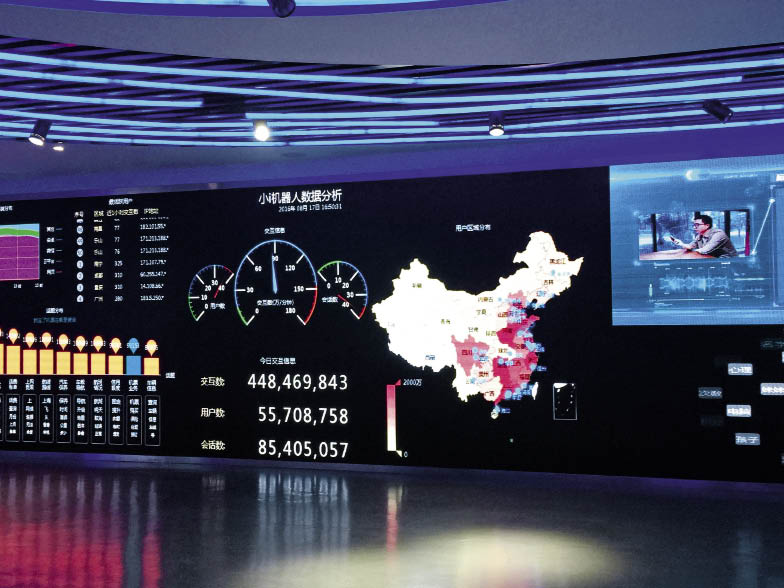Zhu Pinpin: Making Robots with “Brains”
China Today by Xie Feijun, October 13, 2016 Adjust font size:
Transformation of Xiaoi
A “chatbot” named Xiaoi made the first public appearance of one of Zhu’s products on MSN in 2004. Before this, only human beings were able to chat on MSN.The introduction of Xiaoi meant that a user could chat with a bot. Different from human beings, Xiaoi gave answers to every question asked. “Some people were intrigued to chat with Xiaoi, so we accumulated a pool of users very quickly,” said Zhu. Back then, users meant money, and you didn’t need a closed cycle to make profit on the Internet.
It was just at that time that Zhu, as China’s first pioneer of commercializing chatbots, began to ask himself and his team the question, how could this type of chatting generate commercial value?
This question was followed up with a series of explorations, during which the company continued developing Xiaoi applications, adding weather reports and stock checking to its function list. In 2006, specialized field knowledge was installed into Xiaoi to make it a virtual customer aide. The advantages of this kind of virtual aid are obvious: communication and labor costs associated with customer service staff who answer phone calls was rising in the telecommunications, banking and airline industries; more important, this kind of work is so boring that staff turnover rates are very high. Automation is Zhu’s solution to this problem. He envisioned that 80 percent of the work, like inquiries and similar monotony, could be done by robots, leaving customization to real operators.

Data analyses show that Xiaoi Robot users now surpass 50 million.
Despite this grand vision, it has been hard to find customers. Since domestic companies introduced telephone service systems as late as 2000, they were not eager to reduce costs. “Innovation is much more difficult than one could imagine. During the whole process, there may be more onlookers than participants or supporters.” Jiangsu Mobile became Xiaoi’s very first corporate customer, and a company to whom Zhu is still grateful. He and this trial user see eye to eye in many aspects. They first applied bots to its website, and then to text messages. Fortunately, feedback data proved encouraging, with labor costs reduced by RMB 2 million and new revenue from text message bots increasing by RMB 2 million.
Xiaoi became an overnight hit. In a short period of time, many branches of China Mobile, telecommunications companies, banks, and airlines contacted Xiaoi with the aim of using bots for monotonous labor. Today, several siblings of Xiaoi are operating in our daily life. For example, Xiaozhao, a customized bot for China Merchants Bank, offers 24-hour service in all kinds of business, including smart customer service, cellphone applications and offices. Data show that the application of bots saved China Construction Bank 6,000 seats every year. Statistics from the Bank of Communications indicate that in December 2014 alone, RMB 10 million was saved thanks to bots.
During an interview it was revealed that Xiaoi Robot has currently provided intelligent bot services to over 500 million people worldwide, making it one of the top AI enterprises and a major engine driving the “Bot Economy.” Furthermore, it occupies at least 70 percent of the domestic customer service robot market share.

